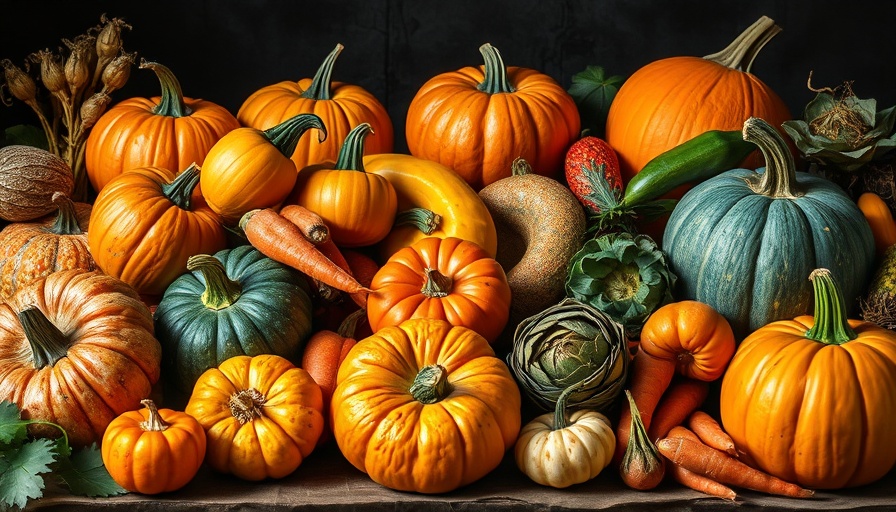
Understanding the Timing for Fall Planting
As summer days start to cool, it's essential to shift your focus to planting fall vegetables—the opportunities are ripe for harvest. Timing your planting effectively is crucial to ensuring a bountiful yield. Familiarize yourself with your local average first frost date; this will serve as a critical guidepost. For instance, if the first frost date is September 15, and you’re planting radishes that take about 25 days to mature, you'll want to plant them by late August.
Choosing the Right Spots for Your Fall Veggies
Your garden’s layout can significantly influence your harvest. One proven method is to utilize spaces that have recently become available, especially after harvesting summer crops. For those who have grown garlic, for example, this heavy producer leaves you a perfect plot to fill with fast-growing fall varieties like greens or peas. Consider incorporating a mix of compost to enrich the soil, ensuring a nutrient-rich environment for your new additions.
Top Fast-Growing Vegetables for Fall
When planning your fall garden, here are some fast-growing vegetables to consider planting:
- Leafy Greens: Spinach, kale, and Swiss chard can be sown as late as mid-September depending on your frost date.
- Root Vegetables: Radishes and turnips thrive in cooler weather and can mature in about a month.
- Brassicas: Broccoli and cauliflower are excellent choices as they withstand mild frost.
The Importance of Succession Planting
Maximizing your harvest can also be achieved through succession planting. By staggering your vegetable sowings, you can increase your chances of enjoying fresh greens for an extended period. For example, if you're growing lettuce, sow seeds every two weeks to enjoy a continuous supply rather than one large harvest in October.
Incorporating Herbs into Your Fall Garden
Don't overlook the benefits of growing herbs alongside your vegetables. Herbs like cilantro and parsley can offer flavor enhancements to your fall dishes. Additionally, they can help attract beneficial insects, which can aid in pest control. Planning your herb garden alongside your vegetable layout will ensure access to fresh flavors throughout the season.
Extending Your Growing Season
Consider utilizing row covers or cloches as the weather turns colder. These simple tools help maintain warmth around your plants, potentially extending your growing season by a few weeks, allowing for the harvesting of late crops before the full brunt of winter sets in.
Engaging with Your Local Gardening Community
As you embark on your fall vegetable planting journey, harness the power of community. Local gardening clubs often share valuable insights related to specific varieties that perform well in your area, making your fall gardening efforts even more fruitful.
Conclusion: Start Planting Now for a Prosperous Fall Harvest!
With the right planning and care, your fall vegetable garden can be a small slice of abundance that beautifully bridges the summer to fall transition. Whether you’re a seasoned gardener or have just begun to plant seeds, you can enjoy the benefits of autumn's harvest. So gather your gardening tools, consult your frost dates, and get planting!
 Add Row
Add Row  Add
Add 




Write A Comment